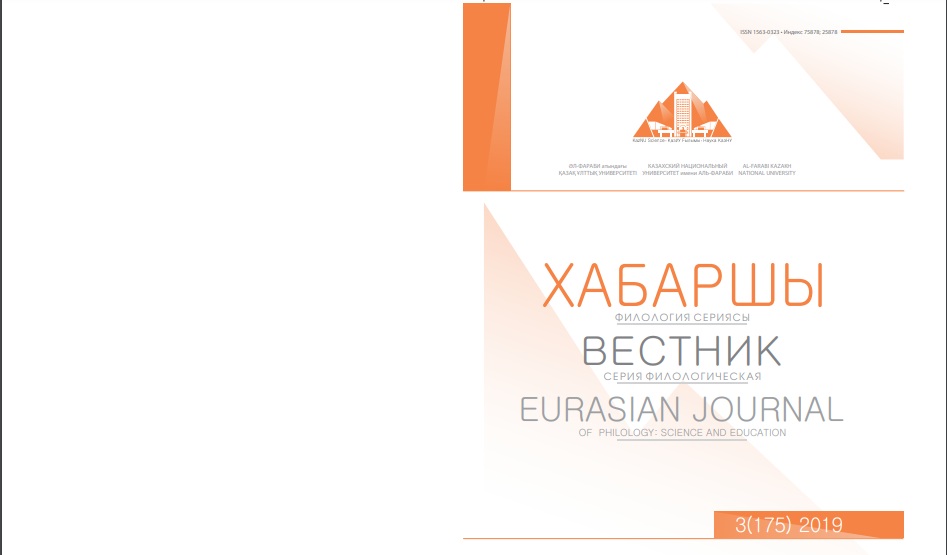The vowel a, i and e in Orkhon Inscriptions (Basen on the Tonyukun and Kül Tigin Inscriptions)
DOI:
https://doi.org/10.26577/EJPh-2019-4-ph12Abstract
In the sense of a traditional perspective, there are 8 vowel phonemes in the Orkhon inscriptions, which can be divided into two groups with respect to the features of vowel harmony and it
constructs a close system of the vowels. There is no a special character for the close vowel /e/ in Orkhon
inscriptions. In the transcription process, although some scholars offer a suggestion that the existence of
the close vowel /e/ is possible, it has been refused by the theoretical narrative whichalways follows the
empirical methodology as their basis. The present paper argues that the close vowel /e/ exist in Orkhon
inscriptions according to the spelling features of the vowels /ä/ and /i/.
The main characteristic of vowel i is the pre-lingual vowel sound, the p sign corresponding to the
syngormanism of the vowels in words is characteristic of the soft vowel sound i. The relation of sign and
sound is determined.
ä, which occurs at the beginning of words, respectively to the spelling rule, is not indicated in the
letter, and on the other hand, it is impossible not to write the sound i at the beginning of words. This rule
in the texts of the monuments has been preserved as a perfect systemic norm.
a (ä), occurring after the consonants of the first syllable of a morphological invariable word,
is found in the texts of two monuments, a (ä) is not written accordingly to the spelling rule.
The article provides a textual analysis of the texts of the monuments “Tonykөk” and “Kultegin”. A phonetic analysis was made in connection with the reading of vowels and consonants in two monuments.
The correspondences of the sign and sound of the monuments are examined, and a comparative analysis
is made of synchronous phonetics.






